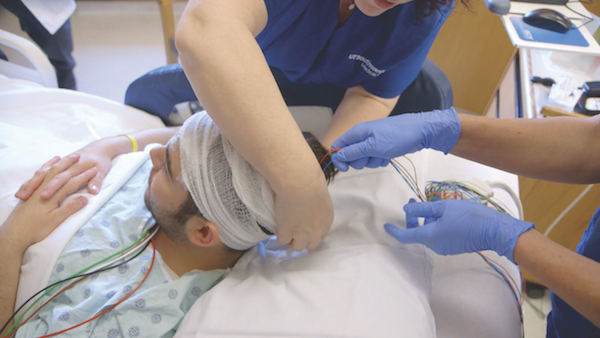A seizure refers to the sudden electric disturbance in the area of your brain. This electric disturbance is uncontrolled. It leads to changes in feelings or movements, behavior, and consciousness level. If a person experiences two or more seizures in a day without any cause then he might have epilepsy.
Seizures have many types. These types range in the severity of symptoms. Types of seizures vary by their location where they begin in the brain and how far they start spreading. The duration of most seizures is from thirty seconds to two minutes.
A seizure is a medical emergency if it lasts more than five minutes. Seizures are more common than people might imagine. Seizures can occur after a close injury of the head, stroke, infections like meningitis, or other illnesses. The exact cause of seizures is still not known.
Medications can control some seizure disorders. But seizure management can still impact your daily life. The good thing is that you can control seizures with the help of your doctor. Moreover, they help you to balance certain side effects of medications.
Epileptic seizures refer to epilepsy or seizure disorders. Many brain disorders such as tumors, strokes, or structural abnormalities play a vital role in causing seizures.
Treatment Of Seizure’s Disorders
It is not necessary that you will have another seizure if you already suffered one. Doctors may not start proper treatment until you will have a second one.
The aim of seizure treatment is to find a good therapy to control or stop seizures. Doctors try to find the treatments which have the fewest side effects.
Medication
Anti-seizure medications are often used for the treatment of seizures. There are different options for such medication. Food and Drug Administration has approved recent medication cannabidiol, derived from marijuana.
This medicine is approved for treating specific seizures in children of two years and above. The medication goal is to provide you the medicine that works best for the treatment of seizures with the fewest side effects. The doctor prescribes more than one medicine in specific cases.
It can be tough to find the right dosage and medication. You may have to try different medications to search for the one which works best for you to control your seizures. Side effects might be dizziness, weight gain, mood changes, and fatigue.
Some serious side effects lead to the damage of bone marrow and liver. The doctor who is treating you considers your age, your condition, frequency of seizures, and some other factors when he selects medicines to recommend.
Doctors review other medications that you are using to ensure that anti-epileptic medications do not interact with those medicines. They choose the best possible treatment for you to promote the fattest recovery.
Surgery
Doctors give you the option of surgery when other treatments do not prove effective. The goal of surgical treatment is to stop the occurrence of seizures.
Brain Surgery is a good option for people who have seizures in the same area of the brain. Surgeries have different types. Some of them are given below.
- Lobectomy (lesionectomy)
- Multiple Subpial Transection
- Corpus Callosotomy
- Hemispherectomy
- Thermal Ablation
Electrical Stimulation
Other procedures that provide relief from seizures are:
- Vagus Nerve Stimulation
The doctor implants a device underneath your chest skin that stimulates the vagus nerve present in the area of your neck. It sends signals to your brain to inhibit the occurrence of seizures.
You may still need to get some medications with vagus nerve stimulation. It makes you able to lower the dose of your medication.
- Responsive Neurostimulation
The doctor implants a device on your brain surface or within the tissues of the brain to detect the activity of seizures. It delivers electrical stimulation to the area that is detected for seizures activity to stop the happening of seizures.
- Deep Brain Stimulation
Doctors implant specific electrodes in the areas of your brain that produce electrical impulses. These electrical impulses help to regulate abnormal brain activity.
Electrodes are attached to a device that is similar to a pacemaker. Doctors place this device under your chest skin to control the amount of stimulation.
Dietary Therapy
A ketogenic diet improves the chances to balance seizures. This diet has a high amount of fats and a low amount of carbohydrates. It is challenging to follow a ketogenic diet because this diet is very strict. The ketogenic diet allows you to take a limited range of foods.




